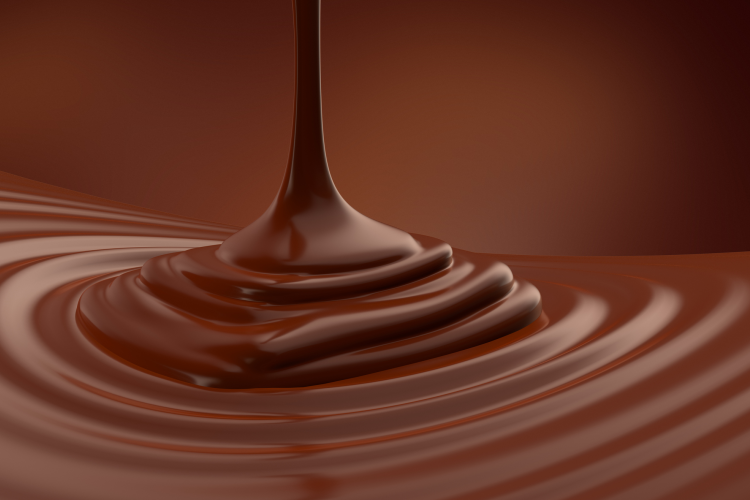
In addition to taste, sensory attributes like mouthfeel and even the sound made when we bite into something all contribute to our enjoyment of the eating experience. Dutch physicists and food researchers set out to discover whether it is possible to design edible materials that optimize this enjoyment.
In a study published in Soft Matter this week, researchers from the University of Amsterdam, Delft University and Unilever, demonstrates that the mouthfeel of an edible substance can be designed, just like properties of many other materials can. That is, they create metamaterials… materials that are not found in nature but that are carefully constructed in the lab.
Designing mouthfeel through shape
The scientists worked with chocolate, a material that presents a number of challenges. Heating it up and cooling it down can turn soft chocolate into much more brittle tempered chocolate, or vice versa.
The first challenge for the researchers was to ensure consistency in the chocolate they use. This was achieved by ‘very carefully’ heating it up, adding scold chocolate and cooling it down again. This mixture was then put it in a 3D printer.
This allowed the researchers to print essentially any shape of chocolate material they wanted, while guaranteeing that the base material always had the same properties.
The first shape of edible material that the scientists experimented with was an S-shaped chocolate with ‘many twists’. The goal was to test how this material would break and how that breaking would be experienced in the mouth.
Tests showed the breaking properties depended strongly on the direction of ‘biting’. When the chocolate was pressed from above, many different cracks occurred one after another, but when pressed in a perpendicular direction, usually only a single crack occurred.
This was tested mechanically and by feeding the chocolates to a panel of 10 testers. persons. Both the mechanical tests and the test panel confirmed moreover that the ease of bite was better the more cracks that were produced.
Cracking good chocolate
Most people enjoy the experience of food crackling down in their mouths – and the more cracks, the better, the research stressed.
Having shown that such an experience can be ‘designed’, the researchers now tried some different structures, searching for a shape where the number of cracks can be ‘programmed’ into the material.
The results showed spiral-shaped chocolate metamaterials ‘have quite interesting and tunable properties’.
“Not only does the number of windings directly control the number of cracks when the material is pressed mechanically; the test panel could also clearly distinguish between less and more cracks when eating the chocolates. Moreover, sound recordings showed that the sound the chocolates makes when being bitten reflects the number of cracks, adding to an enjoyable eating experience,” they noted.
A mathematical model for ‘prefect’ chocolate
The study then asked whether designing an enjoyable eating experience is a matter of trial and error, or can edible materials be optimised and finetuned by design?
The researchers found that with a ‘well-chosen mathematical model’, they can indeed optimize certain shapes of chocolates with respect to, for example, their resistance to break when bitten from certain directions.
The design of edible metamaterials had not been studied before. The new research opens the door to ways to design foods that are enjoyable to eat – and more generally, to design materials that optimize the interaction between humans and matter, they suggested.
Source
‘Edible mechanical metamaterials with designed fracture for mouthfeel control’
Soft Matter
DOI: https://doi.org/10.1039/D1SM01761F
Authors: André Souto, Jian Zhang, Alejandro M. Aragón, Krassimir P. Velikov, and Corentin Coulais